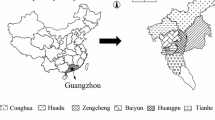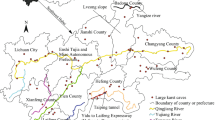Abstract
The proposed realignment of a portion of US Highway 58 near Gibson Station, Lee County, Virginia, indicated significant potential impacts to Young-Fugate Cave, a listed Significant Cave. Field inspection of the site in November 1991, revealed fill for the northbound lane would extend in excess of 100 m into the Fugate blind valley and to within 40 m of the Fugate insurgence. Questions were raised about the risks involved in placing a soil fill across an active blind valley and the extent of the geotechnical investigation. The plans-contained no provisions to direct runoff of road salt or leaks and spills from accessing the Fugate insurgence and thereby endangering two species of troglobitic aquatic crustaceans and a unique troglobitic beetle known to inhabit the cave. Concerns about the distances between the roadbed and cave passages prompted a resurvey of the 1.63-km-long cave. Survey teams encountered groundwater pollution problems in the cave. While exiting the cave, two team members lagging behind another surveyor had to press against the cave walls to avoid a shower of raw sewage. Neither the lead surveyor or the team following, separated by minutes, witnessed the event. On the second field day, survey teams were driven from the cave by petroleum fumes at a second location. Subsequent surface investigations revealed a homeowner complaint of petroleum fumes in their basement and a leaking underground storage tank (LUST) site at an active service station. Tank replacement has resolved the gasoline fume complaint. The sewage inputs to the cave have yet to be located or resolved. Based on the available data at the time this paper was submitted for the Sinkhole Conference, there appeared to be on the order of 10 m between the ceiling of the stream passage and the proposed roadbed; however, unsurveyed cave passages were known to cross over the stream passage in the area where the proposed highway would cross the cave. The Virginia Cave Board is negotiating modifications to this construction proposal based on the engineering and environmental problems at this site.
Similar content being viewed by others
References
Holsinger JR (1975) Descriptions of Virginia caves. Virginia Division of Mineral Resources Bulletin 85, 450 pp
MAXIM Engineering, Inc. (1992) Jonesville Oil Company, Inc.: Brooke's Exxon site: Norton, Virginia. MAXIM Project No. 92-786, 34 pp
Author information
Authors and Affiliations
Rights and permissions
About this article
Cite this article
Hubbard, D.A., Balfour, W.M. An investigation of engineering and environmental concerns relating to proposed highway construction in a karst terrane. Geo 22, 326–329 (1993). https://doi.org/10.1007/BF00767505
Received:
Accepted:
Issue Date:
DOI: https://doi.org/10.1007/BF00767505




